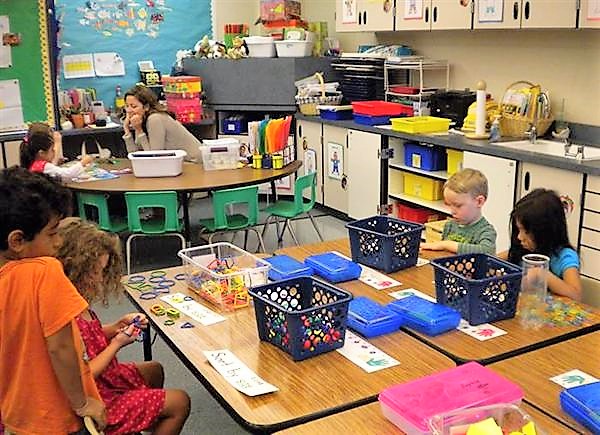In an effort to expand transitional kindergarten to all 4-year-old children in California by 2025–26, local educational agencies have focused their efforts on developing facilities and ensuring suitable staffing, but state leaders must turn their attention to promoting high-quality teaching and learning if universal TK is going to help all students meet learning goals, according to new research.
On May 16, Policy Analysis for California Education released a brief based on 25 interviews with district leaders and national experts on early childhood education, along with a review of research and analysis of policy documents. Findings show LEAs have focused their efforts on the initial rollout of UTK around the things the state has mandated, such as finding classrooms that meet facilities guidelines and hiring enough appropriately credentialed teachers and paraprofessionals to meet the required staffing ratio.
“High-quality pre-school instruction can make a difference for students, only high-quality preschool instruction results in persistent positive gains,” said Alix Gallagher, the lead researcher of the PACE brief. “California has taken important steps to address facilities and staffing but needs to shift its focus to ensure high quality, developmentally appropriate instruction for its youngest learners if it is to meet its goals for improving student learning and achievement. Additionally, while our interviews show that the state has been working on multiple fronts to roll out TK, many school districts face limits to their capacity to serve all eligible students.”
The state has provided resources to educators and schools through the California Department of Education website and regular webinars and is currently revising standards and aligned assessments used by state-funded preschools to specify learning goals and ways of assessing TK students.
While these are all critical steps, researchers note that without the state incentivizing and supporting high levels of enrollment among underserved communities and promoting developmentally appropriate play-based instruction aligned with K-3 learning goals, they are insufficient for ensuring the quality of teaching and learning necessary to make good on its investment.
To fully promote the development of high-quality TK programming for all children, researchers recommend state leaders:
- Set a vision and establish goals that incentivize high-quality TK
- Measure progress in terms of student enrollment, implementation of key features and preK-3 student assessment outcomes
- Align resources and support to advance high-quality implementation of UTK at scale
- Publicly communicate key aspects of implementation and outcomes clearly so that communities can monitor whether their schools are serving them well
Additional reading:
CSBA blog: Commission on Teacher Credentialing moves major initiatives forward
CSBA blog: New resources to help districts smooth transition from pre-K to kindergarten





